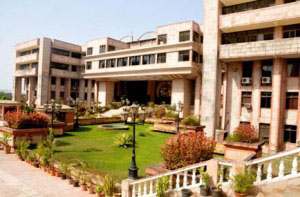
-
(Editor's Note: This post was originally published in Artehelka website by Sushma Sabnis, Bombay Duck is a Fish: Art at CIFE, Mumbai)
While building a good art collection for an institution is no easy task, certain institutions like the Central Institute of Fisheries Education (CIFE) silently engage new methods of art acquisition and realign the perspective of seeing art as a mere investment into a distinct cultural repository of a nation, observes Sushma Sabnis.Fish is the symbol of primordial connections between human beings and the divine. From incarnation myths to Kalighat paintings, we see fish imageries. There is not a single Expressionist artist in India who has not painted a fish in his works. But when a fisheries education institute decides to connect itself to art through workshops and collections, many an eyebrow would go up. Spare some time to visit the Central Institute of Fisheries Education (CIFE) in Mumbai, the raised eyebrows would come down automatically, instead the jaw would drop in awe and curiosity. Here art is not just visual, it has aroma too, of live and dried fish. Bombay Duck is a Fish.
The sea breeze during summers is quite welcome even if you are in a remote corner of Versova, Mumbai, and the smell of the city’s backwaters is overpowering. It is quite the shocker to alight from the tidy, cool Metro and head straight into the sharp smelling salt of drying fish. But as the hues of this living organism Mumbai teaches one about coping, it is heartening to know that there are people who work on these beaches and eke out a living which helps them survive in the city.
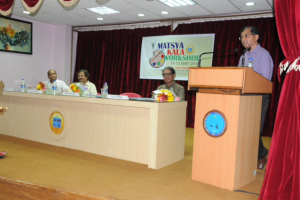
Dr Gopalkrishna Saxena, Director CIFE giving speech at the Matsya Kala Workshop inauguration ceremony Hence it is even more interesting to see that a group of young artists from Sir J J school of Art choose this area, to attend the ‘Matsya Kala Workshop’ at the CIFE located right next to the Versova beach. The humungous building complex is a fisheries university and rises tall and pristine along the mangroves. The CIFE has been around for over 50 years dedicating their time towards marine research and educational programs in various disciplines related to agriculture, fisheries, molecular fisheries and others. So when art enters this arena of sciences, what conspires is truly noteworthy.
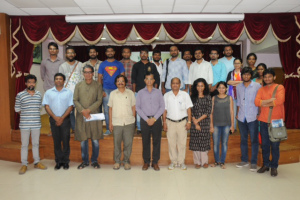
Matsya Kala Workshop participants, organisers and facilitators The ‘Matsya Kala Workshop’ saw 15 art students from J J School led by the resident artist of CIFE, Mr Deepak Khogare and Professor Anant Nikam of J J School, for the first workshop of its kind at this research centre. Dr Gopalakrishna Saxena, the Director of CIFE explained his purpose for such an interesting step towards bringing Art and Science together under one roof.
“Institutions like TIFR, CCMB (Centre for Cellular and Molecular Biology, Hyderabad) and many others have been at the forefront of art collection. People find some kind of a peace and freedom in art, art is an asset and becomes therapeutic as well as an aesthetic element in our overly stressed out lives. I visit art shows, as it relaxes me, and I believe it would do a lot of good to the people who work here as well as the students, faculty members and visitors to be able to look at art when they come here. We also look at art as a means to convey important messages of environmental preservation. We will be displaying these works on our walls at CIFE and these will become our permanent collection. We hope to have such activity workshops every year with CIFE and J J School students too.”
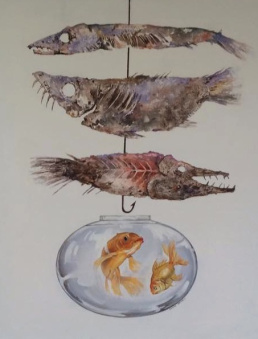
Work by Sagar Kamble 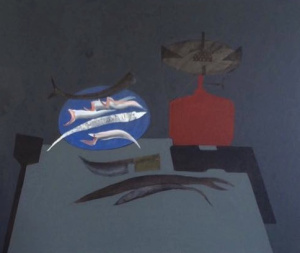
Work by Swapnil Jagtap In the days when art gets forcibly connected to science only because there are international funds to solemnise such nuptials, at CIFE, the resident artist Deepak Khogare has a more humble view, but it sounds realist. “Art is part of science, as in where drawing and illustration of the various species of life forms etc are concerned, but that is documentation. When one looks at a wall based art work, it goes beyond the illustrative and the technical aspect. It becomes open and more relatable to the viewer. Some of the work the students have made here are abstractions of a subject which is limited, hence they liberate it and that is what changes the perspective refreshingly.”
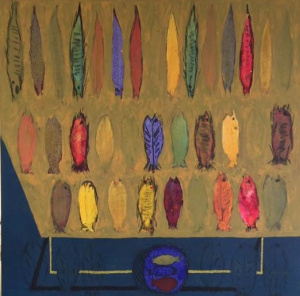
Work by Sunila Ningule 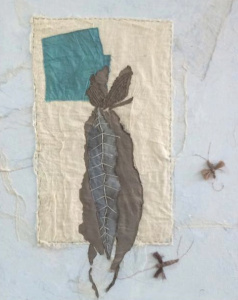
Work by Tanvi Parab The workshop saw some interesting depictions not only of fishes and oceans but also of the people who live off these occupations. The participating student artists were, Shrinivas Mehetre, Avinash Motghare, Nikumbh Prasad, Devidas Agase, Amit Thorat, Milind Atkale, Ritesh Boi, Aniket Vishwasrao, Kinnari Tondlekar, Pooja Shinde, Sneha Varhadi, Prafull Bhangade, Roshani Talan, Atul Bnagal, Pallavi Mool, Uday Kawale, Sunil Ningule, Swapnil Jagtap, Rashmi Bawankar, Appasaheb Tammar, Tanvi Parab, Sagar Kamble, Hemant Gavankar.
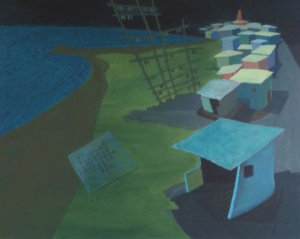
Work by Hemant Gavankar 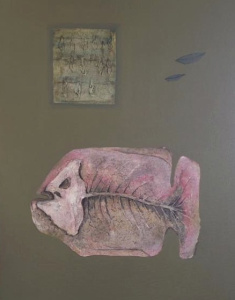
Work by Kinnari Tondlekar Prof Anant Nikam of JJ School who has conducted this workshop says “Students of art need different kinds of inspiration to make art. Nature is the best inspiration, the forms in marine life, the CIFE libraries with thousands of images of life forms, the labs, the beach etc give a different perspective to the understanding of subject, form, shape and colour. These kinds of activities open up the imaginations of the students and I believe it helps create a dialogue with the viewer of the works.”
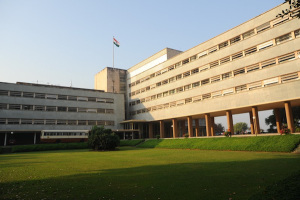
Tata Institute of Fundamental Research, Mumbai Today, apart from the important museums which boast vast collections covering centuries of artifacts, relics, historical texts and interactive sessions with experts, it is quite refreshing to see non-museum establishments carry forward this trend with equal verve. One well known establishment is the Tata Institute of Fundamental Research (TIFR), Mumbai, established by Dr Homi Bhabha, who was instrumental in shaping a commendable art collection. Dr Bhabha believed, ‘Art like Science knows no Frontiers’. While talking to Ms Orindrila Raychaudhari, the chief archivist at TIFR, we are told that the drive to build such a collection was a simple vision of having a creative, vibrant, inclusive and positive environment within the research centre. Bhabha began this art collection in the 1952, purchasing a painting called ‘The Window’ by G M Hazarnis. He acquired special permission from the then Prime Minister Jawaharlal Nehru to devote 1% of the funds allotted to TIFR for the collection of Art works from India artists. Today the TIFR has a phenomenal collection of over 300 art works collected over the years and possibly the largest repository of post colonial art. The works have been restored and protected from damage over the years and this also adds to the cultural dynamics of the nation.

Students of Sir J J School of Art outside CIFE While the global market fluctuations have a direct or an indirect impact upon the art market, museums acquire the right kind of funding to maintain their collections, but it may not be so in the case of other institutions that collect art. While the art collection itself becomes an asset, few notice that to maintain a collection of a certain value, a lot more effort is needed. The world over, there are various private collectors who pursue art collection with equal commitment and become relevant in the historical timelines. From the ‘proletarian’ art collectors like, Dorothy and Herbert Vogel to the level of institutions like the Smithsonian, art collection along with cultural history, natural history and science have become the areas of aesthetic engagement, research and documentation.
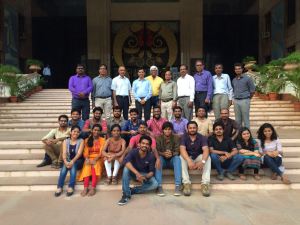
Matsya Kala Workshop participants, organisers and facilitators. Things have changed over time to suit not just the collector’s vision, but also the magnitude of the collection itself. We have enough proof of the fact that collecting art is no longer a niche activity carried out only by certain people or institutions. This could become the ‘cultural’ change as we see it in our country. We have seen it happen in other countries where art becomes a ‘presence’, everywhere and anywhere without being limited to museums and galleries. This could change how art percolates into the human system, the human psyche and becomes an inseparable entity transforming the rigmarole of a mundane existence. Institutions like the CIFE have taken the first step in the right direction to creating a balance, where some CSR related activities end up as mere gimmicks, the workshop module carried out by CIFE opens up avenues of dialogues with all levels of society, as art rightly should.
